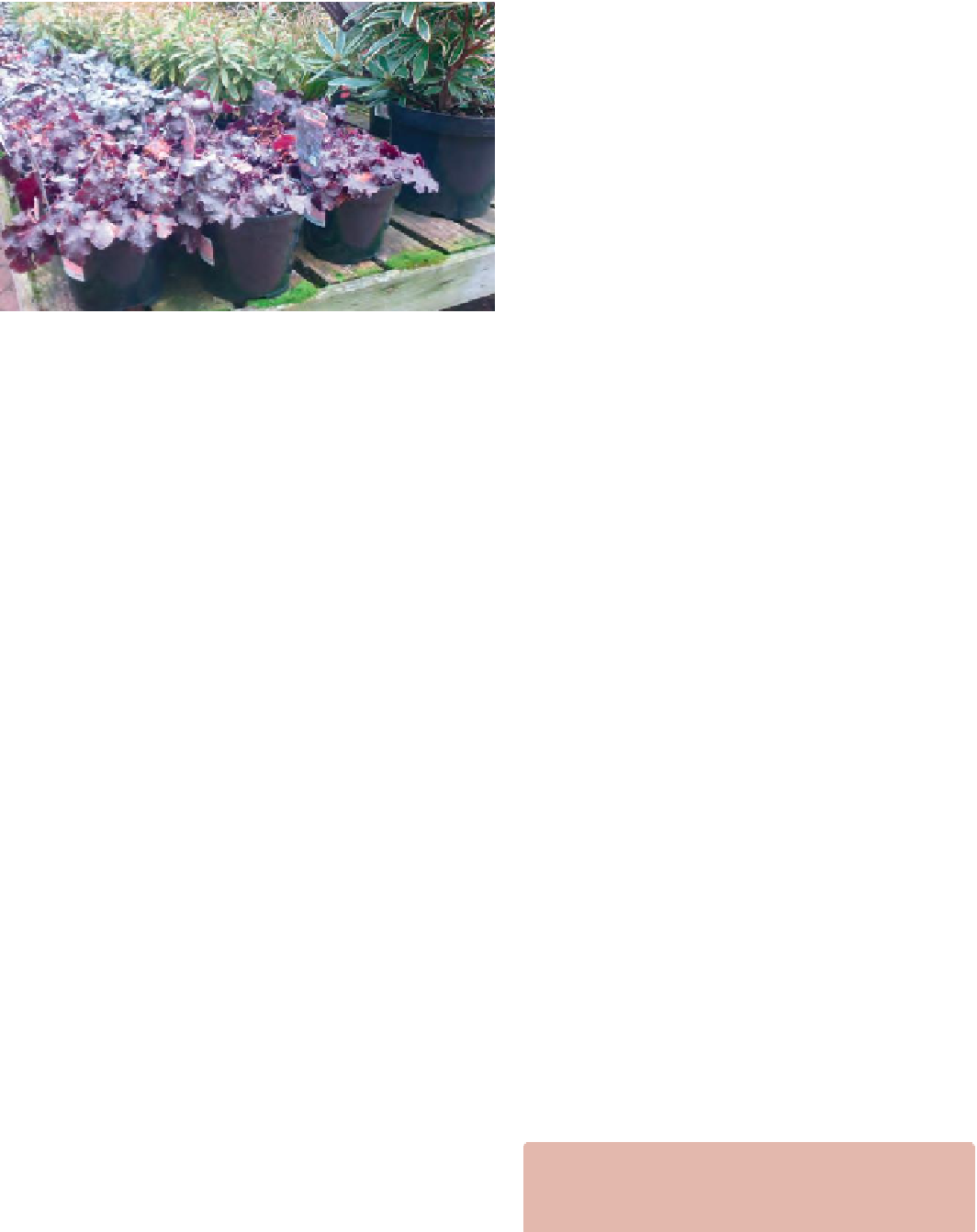Agriculture Reference
In-Depth Information
tanacetifolia
(see green manuring p. 165) and
sterile plants
X
for many species, it is possible to get large
numbers from each plant
X
it can be easily stored
X
it can be a means of avoiding virus transmission
(see p. 264)
X
guaranteed seed sources are available
X
provenance can be carefully sourced.
Provenance
is the place of origin.
It is generally considered a cheap method where
seeds are easily available, such as native trees and
shrubs. The main horticultural uses of seeds include
annuals notably vegetables such as carrots (
Daucus
carota
)
,
French beans
(
Phaseolus vulgaris
)
,
tomatoes
(
Solanum lycopersicon
); decorative flowers
such as
Nigella damascena
;
bedding (
Lobelia erinus
); and the
production of lawns (
Lolium perenne, Poa pratensis,
Festuca rubra
).
Some limitations of propagating plants from seed
should be noted:
Figure 11.2
Containers in a garden centre
Gardeners are familiar with the choices they have
available to add new plants to their gardens. They
commonly collect the plant they want in a container
from a garden centre (Figure 11.2). This will have been
created in a nursery from seed or by vegetative means
such as divisions, cuttings, bulbs or grafting. Many
undertake to grow their plants from these sources
themselves especially when it comes to annuals, such
as vegetables and bedding plants.
A plant's life cycle is detailed in Chapter 5. The length of
time plants live for may be a few weeks (ephemerals)
or hundreds of years (many woody perennials such as
trees), but before it dies the plant ensures continued
life by either sexual or asexual reproduction. Many
plants employ both methods to produce offspring.
Sexual reproduction leads to the formation of seeds
in higher plants (see p. 101). The ability of plants to
reproduce asexually is made use of in horticulture and
is known as vegetative propagation (see pp. 91-96).
X
some plants may not produce viable seed or
viability, especially from some sources, is poor
X
lack of uniformity (i.e. there is variation), plants may
not breed true
X
dormancy problems
X
diffi cult germination, in the open there can be
high loss from the natural 'fi eld factors' (see
p. 132)
X
time to maturity
X
some seeds do not store easily.
Propagation from seeds
Seed germination
The internal and external structure of seeds is detailed
in Chapter 8.
Only
viable seed
will germinate (see p. 66); the seed
has to have a living embryo and have the potential to
germinate when conditions are right.
Sexual reproduction
is the formation of new
individuals through fusion of male and female
gametes (sex cells). It results in variable
offspring
.
Seed germination
is the emergence of the
young root or radicle through the testa, usually
at the micropyle.
Sexual reproduction provides a means of ensuring
variation
in a species. For the grower this makes it
an important source of new cultivars and commercial
hybrids. Other horticultural benefits of propagating
plants from seed include:
X
it is the only method of propagation for some
species such as annuals generally e.g.
Phacelia
A
viable
seed has the potential for germination
when the required external conditions are
supplied.
Viable seeds germinate provided with the right
conditions regarding:




